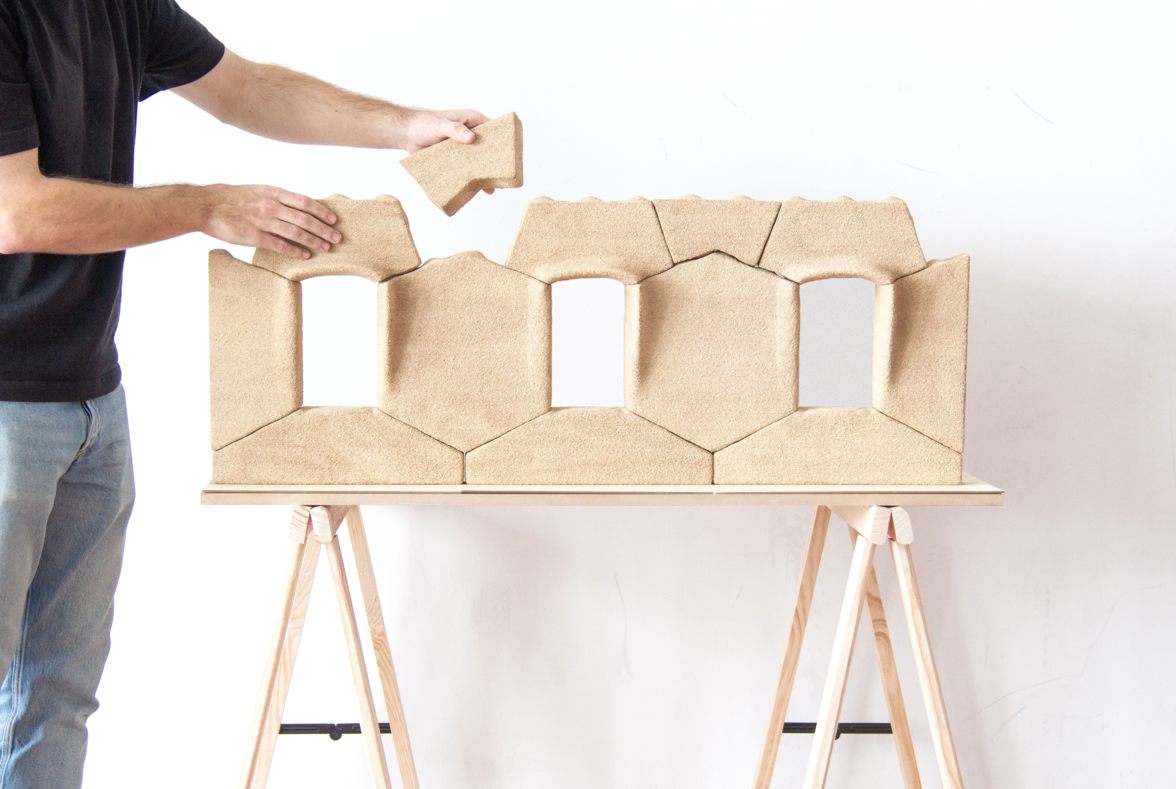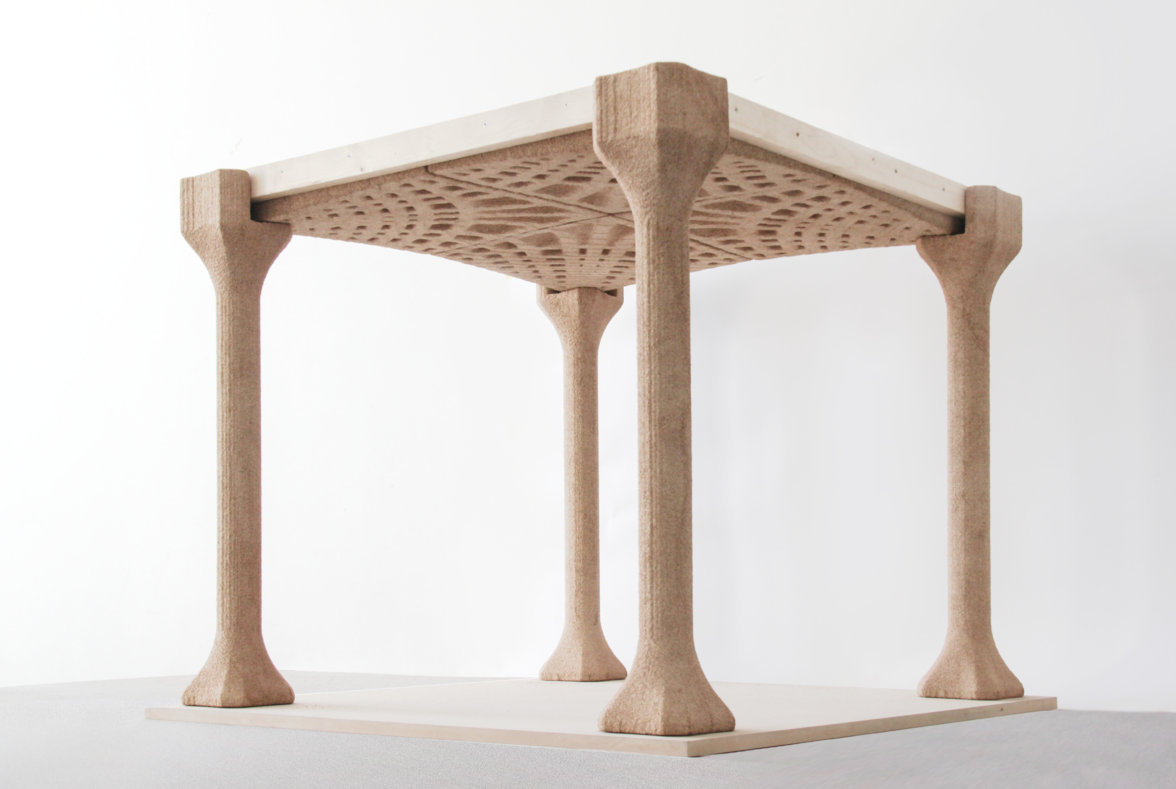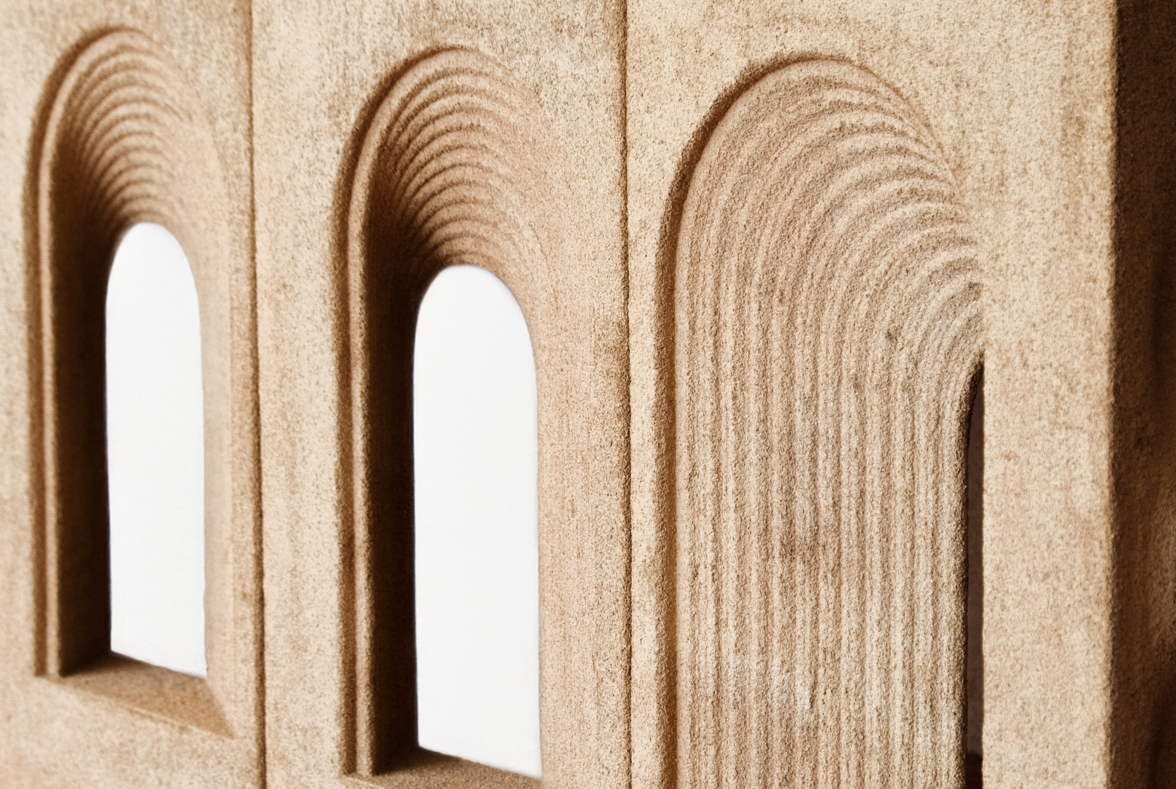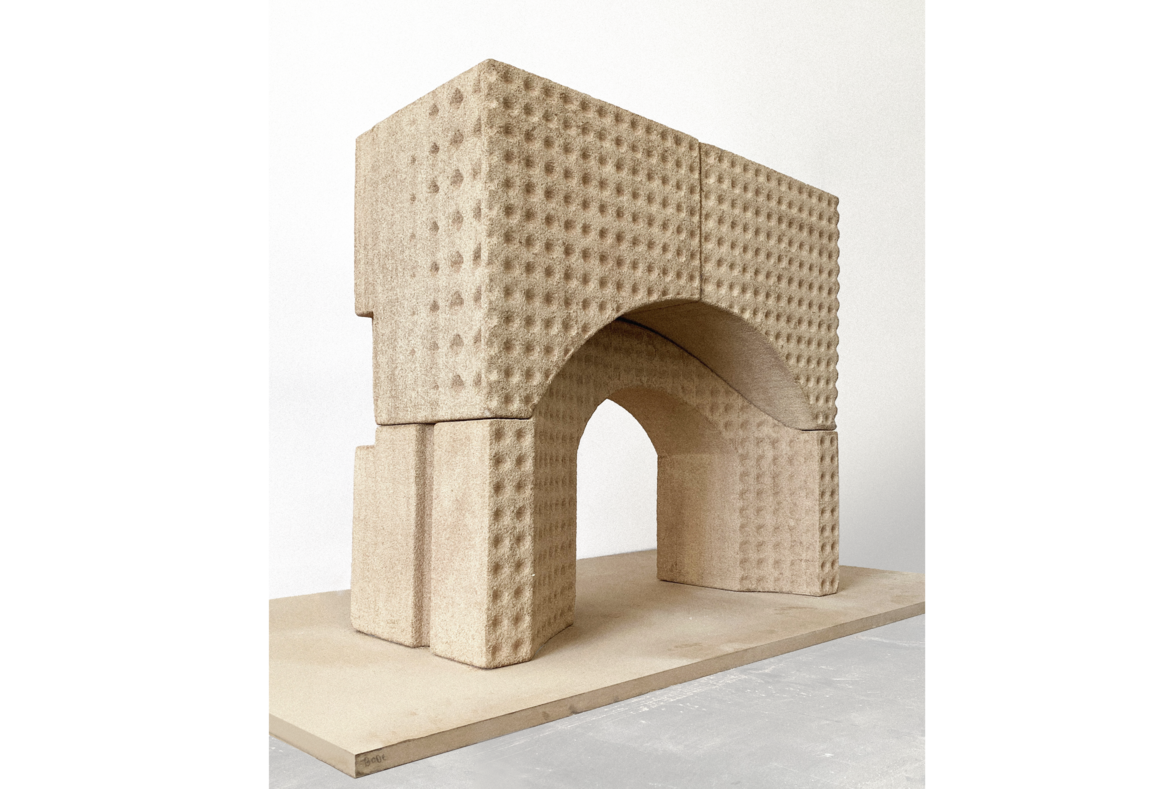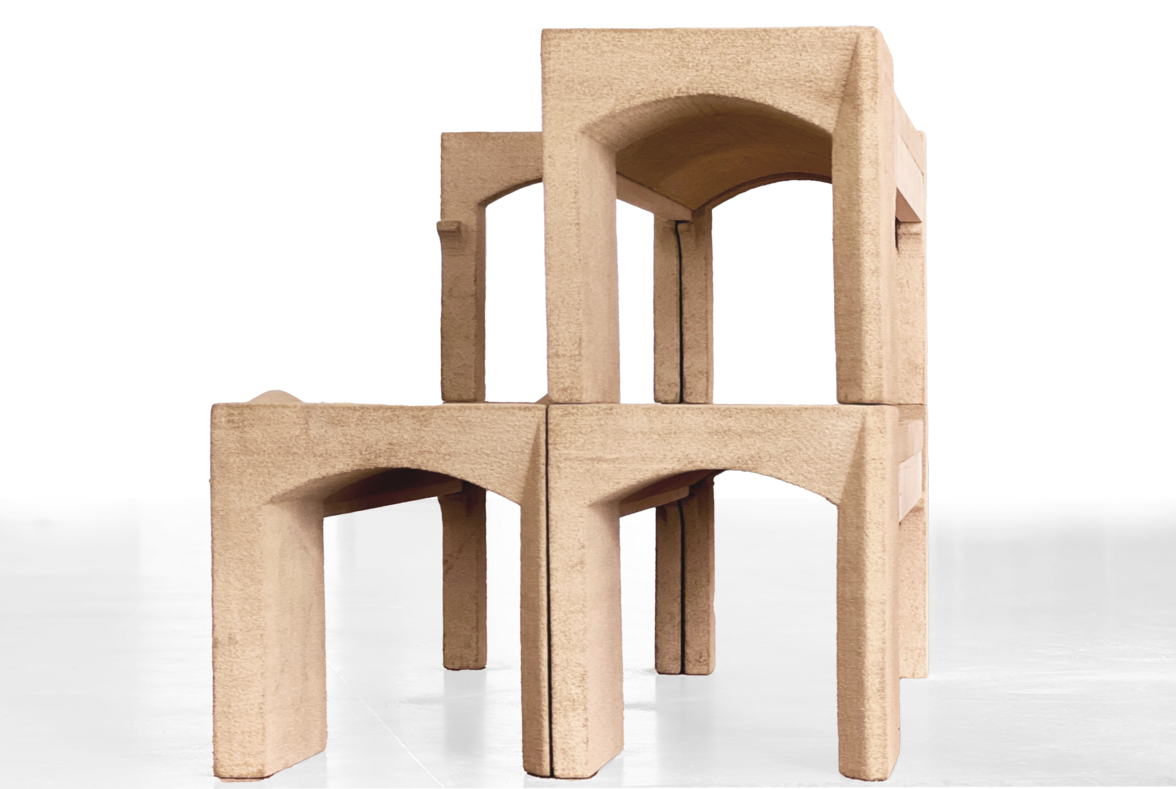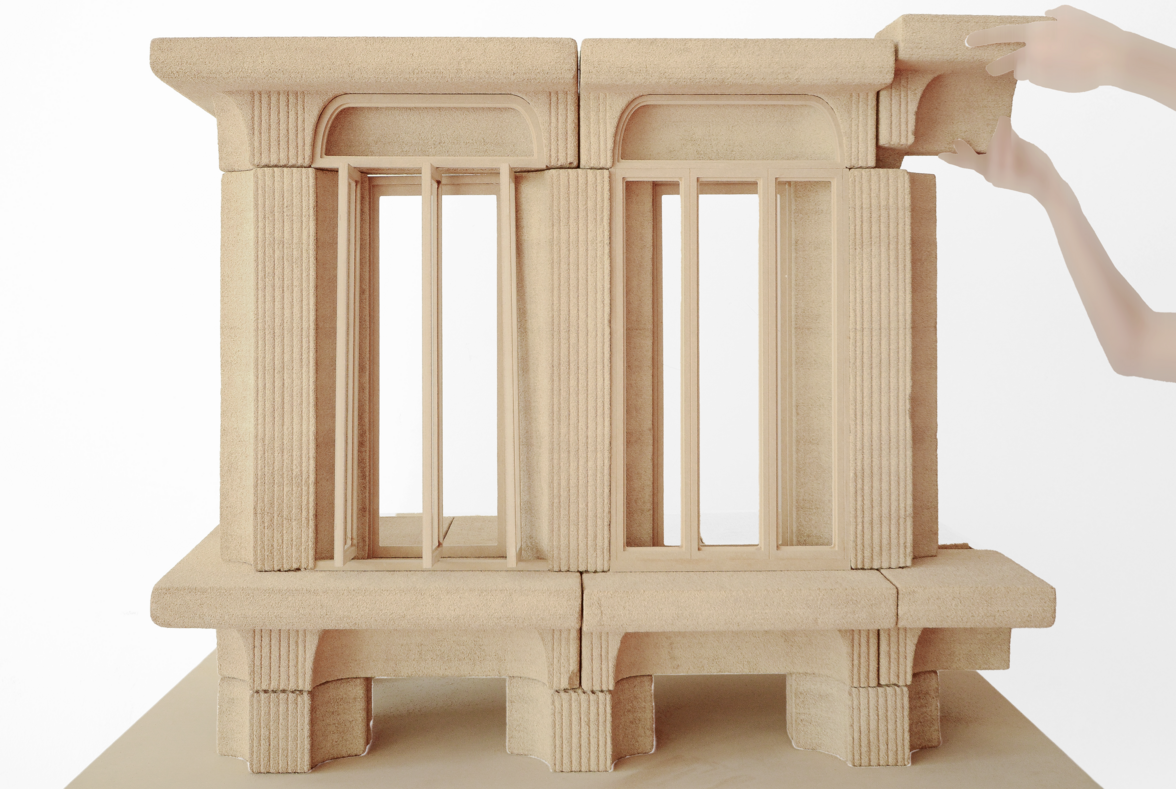Wintersemester 2025/26
Master Project "How to print a House"
The design task of the studio project was to design a mixed-use residential building for flexible use on a vacant lot next to the famous Altes Hallenbad in central Heidelberg. This project aimed to combine passive design strategies with the specific Additive Manufacturing Technology – Selective Paste Intrusion (SPI). By analyzing the features of the SPI technology, such as resolution and granularity, mechanical properties, building physics usability, geometric freedoms, and process constraints, we explored and creatively investigated its potential. These properties were utilized as design drivers to create a sustainable and resource-efficient building. The resulting features ranged from energy-efficient elements, such as optimized thermal insulation, to intelligent systems that enhanced occupant comfort and sustainability.
The project was a collaboration with the Chair of Digital Fabrication.

The Chairs of Timber Construction and Building Design, Building Technology and Climate-Friendly Construction, and Solid Construction jointly offered a project week on the topic of ‘Brick Hybrid’ in 2024. The research project ‘Brick Hybrid 4.0’, which is also being jointly conducted by the chairs and which investigates resource-efficient combinations of bricks, wood and clay with regard to the combined structural design in prefabricated components, forms the basis of the ‘Brick Hybrid’ project week in the Design Factory 1:1 on the main campus of TUM.
Video: ProLehre / TUM
Five groups of students had the task of designing and planning innovative, resource-efficient, easily deconstructable and prefabricated components made of brick, wood and clay, realising them on a 1:1 scale and assembling them into a common space. The theoretical principles were developed by the students themselves and made available to all participants in short presentations. In addition, after assessing and evaluating the finished constructions, the focus was on the simplest possible dismantling that would allow the individual materials to be reused.
The focus of the project week was on ‘getting to grips’, the technical realisation of the creative ideas and plans and the associated challenges of a real construction project with interdisciplinary collaboration in all its facets. The project was supported by the Bundesverband der Deutschen Ziegelindustrie e.V. and Sherpa Connection Systems GmbH, among others.
